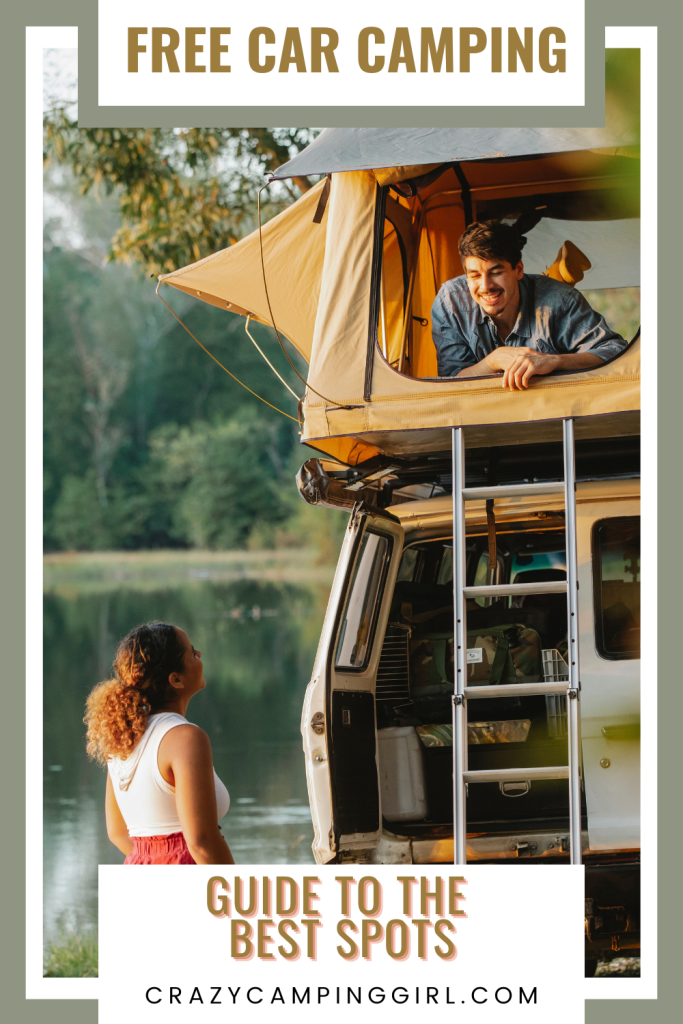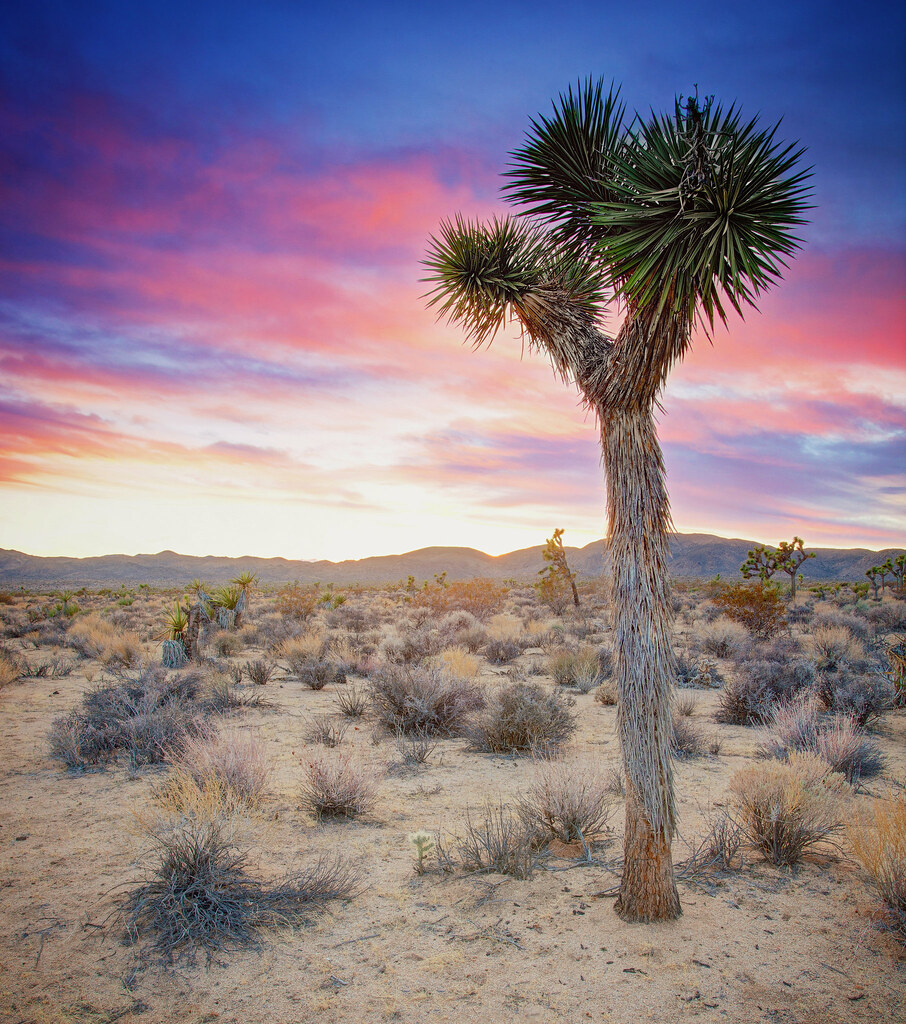
Free Car Camping: Guide to the Best Spots
We may earn money or products from the companies mentioned in this post.
Taking a road trip is one of the best ways to explore the United States, but if you’re traveling during peak season, it’s not uncommon to find fully booked campgrounds and RV sites at popular destinations. When this happens, or if you’re looking for a more budget-friendly way to camp, car camping provides some great options for an impromptu night under the stars.

If you can’t find a traditional campsite in places like Arches National Park, Rocky Mountain National Park, or along the Colorado River, don’t worry, free car camping offers incredible alternatives.
Many national parks, national monuments, and public lands managed by the National Park Service or Bureau of Land Management (BLM) provide the perfect spots for car camping with beautiful surroundings and access to various outdoor activities like hiking, rock climbing, and even horseback riding.
For your first car camping trip, you’ll want to consider a few key factors to make it an enjoyable experience. First, finding the perfect place to park overnight is essential, whether it’s a rest stop, a remote dirt road, or near popular destinations like Big Sur or Black Canyon of the Gunnison National Park.
Make sure your chosen spot has access to water sources, allows backcountry camping, and has tent sites or space for parking your car. It’s also important to check whether there are nearby amenities, such as laundry facilities, cell service, or a camp store for basic supplies.
Understanding the area is crucial, whether in a dense forest, sand dunes, or near a deep gorge, you should always research the general area and know what activities are available. Popular destinations often have miles of trails, scenic views of the highest peaks, and areas suited for backcountry camping.
Don’t forget to bring proper gear for food storage and waste disposal, as you’ll often need to be self-sufficient in more remote areas.
With car camping, you have the freedom to explore even the most popular campgrounds or popular spots and still find a place to stay, giving you plenty of flexibility during your adventure.
Whether you’re planning a trip in early June to North Carolina or looking for a secluded place in backcountry camping territory, car camping offers a wealth of possibilities and lets you experience the great outdoors on your own terms.
What Is Free Car Camping?
Car camping allows campers to use their vehicles as the primary shelter or storage space. Unlike backpacking, where you carry all your gear on foot, car camping provides the luxury of carrying more supplies, from sleeping bags to camp chairs, and often staying close to your car at the campsite.
Free car camping, as the name suggests, is the ability to camp without paying fees. This can be done at various locations like BLM land, national forests, and sometimes in parking lots at truck stops, rest areas, or city parks. The beauty of car camping lies in the freedom and the proximity to nature it provides.
The Best Places for Free Car Camping
1. Bureau of Land Management (BLM) Lands
The Bureau of Land Management manages over 245 million acres of public land across the U.S., primarily in the western states. These lands are perfect for free car camping, offering a mix of remote wilderness and easy access to small towns and cities.

Popular BLM lands include the Mojave Desert in California, the Alabama Hills near the eastern Sierra Nevada, and areas surrounding Joshua Tree National Park.
BLM lands typically operate on a first-come, first-served basis, so getting there early ensures you find the perfect camping spot. Many BLM areas provide basic amenities like fire pits and trash cans, but you’ll need to bring your own water and ensure you pack out all your trash.
These lands are a great way to camp for free in remote areas while still being close to nature’s most stunning landscapes.
2. National Forests
National forests offer some of the best free car camping options in the country. With over 190 million acres of land, the National Forest Service allows dispersed camping in many areas without the need for reservations or fees.
Some popular national forests for car camping include the Rocky Mountain National Forest, the Appalachian Mountains, and the San Bernardino National Forest in Southern California.
While many national forest campgrounds do charge a fee, dispersed camping outside of developed campgrounds is free. These forests often provide miles of hiking trails, scenic views, and access to potable water. They are great for car campers looking to explore the great outdoors and escape the crowds at official campgrounds.
3. Rest Areas and Truck Stops
For car campers on long road trips, rest areas and truck stops can provide a convenient place to sleep overnight. Many states allow overnight parking at rest areas, though it’s a good idea to check local laws before pulling in for the night. Truck stops, like Love’s or Pilot Flying J, also offer free overnight parking for car campers, and they often have amenities like showers, food, and grocery stores nearby.
This option is especially useful when you’re traveling across the country and just need a safe place to rest for the night. While not as scenic as a national park or BLM land, these spots are often well-lit, monitored, and close to easy access roads and highways.
4. National and State Parks
While not all national parks offer free camping, some allow dispersed camping on the fringes of the park or in BLM lands adjacent to the park.

Joshua Tree National Park, Zion National Park, and Yosemite National Park are surrounded by public lands that provide free camping spots. Denali National Park and the Great Smoky Mountains National Park also have nearby free options for those looking to camp without paying for an official campsite.
State parks can also offer free car camping, particularly in picnic areas or recreation areas where camping is allowed. These sites usually have access to picnic tables, flush toilets, and sometimes fire pits.
How to Find Free Car Camping Spots
1. Google Maps and Camping Apps
One of the easiest ways to find free camping spots is by using Google Maps or specific camping apps like Campendium or iOverlander. These apps allow you to search for free campsites, BLM land, and national forest campgrounds near your location, providing reviews, GPS coordinates, and up-to-date information on each site.
2. Bureau of Land Management and National Forest Websites
Visiting the websites of the Bureau of Land Management or National Forest Service is another great resource for finding free camping. These websites often have detailed maps and camping guidelines for each public land area, including information on fire permits, access roads, and specific camping regulations.
3. Visitor Centers and Ranger Stations
When arriving at a national park or BLM land, stop by the visitor center or ranger station to get date information about current camping regulations, fire restrictions, and the best areas to camp for free. Rangers are often knowledgeable about lesser-known spots and can guide you to more remote areas for a quiet, free camping experience.
Tips for a Successful Free Car Camping Trip
1. Pack the Essentials

When you’re camping for free, amenities can be sparse. Always pack a sleeping bag, plenty of water, food, and a camp stove or portable cooking equipment. Many free camping spots don’t offer potable water, so it’s crucial to bring your own or know where you can refill.
2. Leave No Trace
Free camping often means you’ll be camping in more pristine, natural areas. Always follow the Leave No Trace principles, packing out all your trash, and leaving the area better than you found it.
3. Check for Local Laws and Regulations
Different areas have different rules for camping. Before setting up camp, make sure you check for any specific regulations regarding overnight parking, campfires, and camping durations. Some areas may require a fire permit, and others might limit camping to a certain number of nights.
Final Thoughts on Free Car Camping
Free car camping is one of the best ways to explore the U.S. on a budget while enjoying some of the country’s most stunning landscapes. From BLM land and national forests to truck stops and rest areas, there are endless opportunities for free camping if you know where to look. Always plan ahead, pack the essentials, and respect the land you’re camping on to ensure future campers can enjoy these spots too.

Frequently Asked Questions about Free Car Camping
Is free car camping legal in all national parks?
Not all national parks allow free camping, but many parks have nearby BLM lands or national forests where dispersed camping is free. Always check the specific park’s regulations or ask at the ranger station for advice.
How do I find free car camping spots?
Use apps like Google Maps, iOverlander, and Campendium to find nearby free campsites. You can also visit BLM and National Forest Service websites or ask for tips at local visitor centers.
Do free campsites offer amenities like toilets or potable water?
Most free campsites are more primitive and don’t offer amenities like flush toilets or running water. Some spots, particularly near developed areas or truck stops, may have basic facilities like trash cans or picnic tables.
Can I camp for free in popular parks like Joshua Tree or Yosemite?
While camping inside Joshua Tree National Park or Yosemite requires a fee, there are often free camping areas nearby on BLM lands or national forests.
Is free car camping safe?
Free camping is generally safe, but it’s important to stay aware of your surroundings. Choose well-lit spots if staying at rest areas or truck stops, and always let someone know where you’re camping, especially if you’re in a remote area.
